what’s cooking
upcoming work and projects in development.
stay tuned for updates.
who will save the night sky?
Upcoming performance at Nozhem First Peoples Performance Space, November 7-9, 2025
Did YOU know there are nearly 4000 satellites already in the sky, with hopes of 42,000 in the near future? DID you know in 1958 we nearly nuked the moon? Did you KNOW that when satellites stop working, they are left to float in the outer atmosphere of earth…alone…hapless, hopeless, helpless :(
ENOUGH FACTS!
allow me to take you on a celestial journey, snacks provided, to a big board room in the sky. plleeeaaassee, allow me to whisk my tail and weave you a tale and tattle tale on the tell tale signs of a GOOD STORY! a long time ago, in the future an important group of star beings got together to discuss the fate of earth and the two leggeds…and the party begins. ;)
Blending bouffon, clown, storytelling, and spectacle, who will save the night sky? is an interactive solo performance reminding us of the importance of our relationship to the stars and sky world.
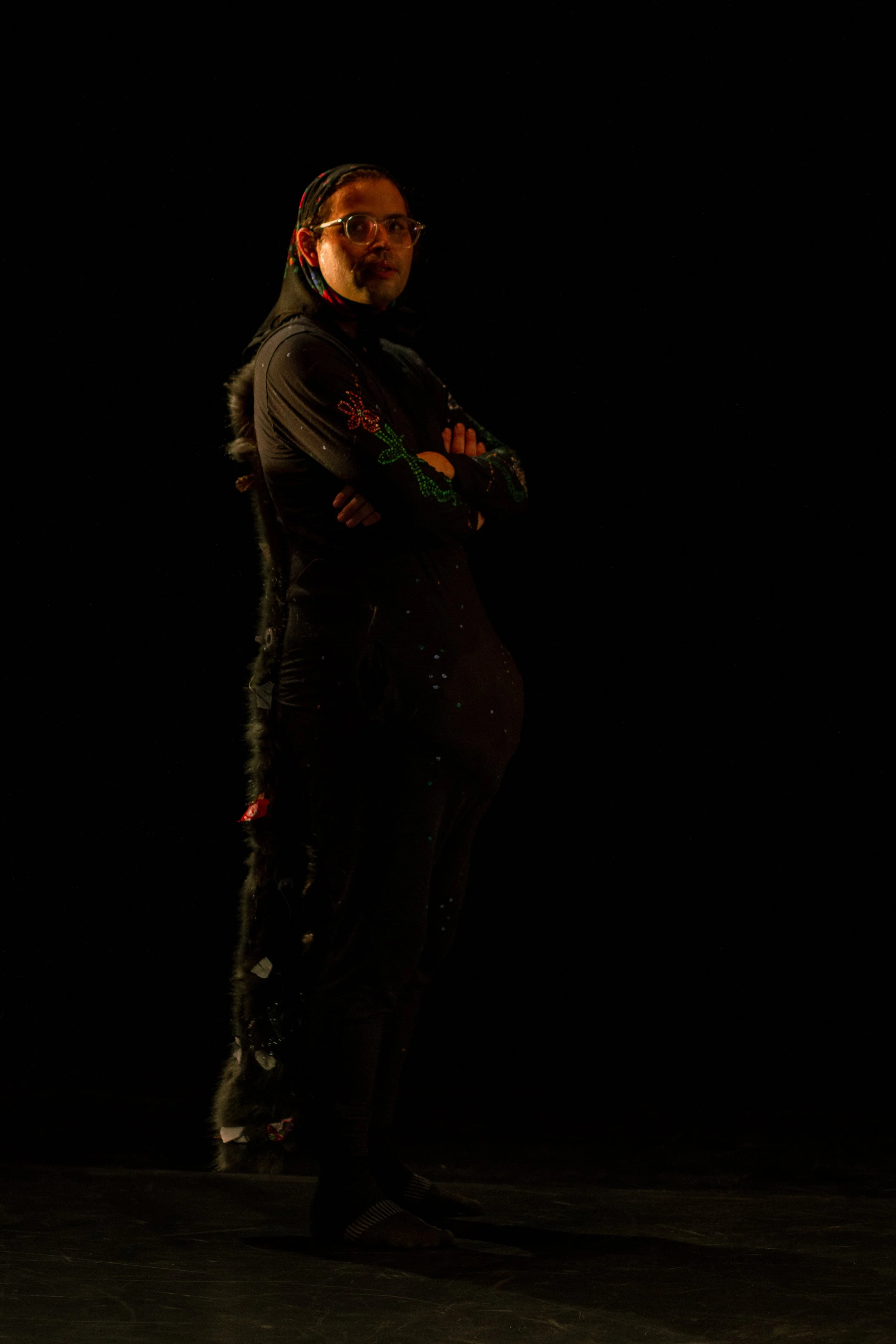
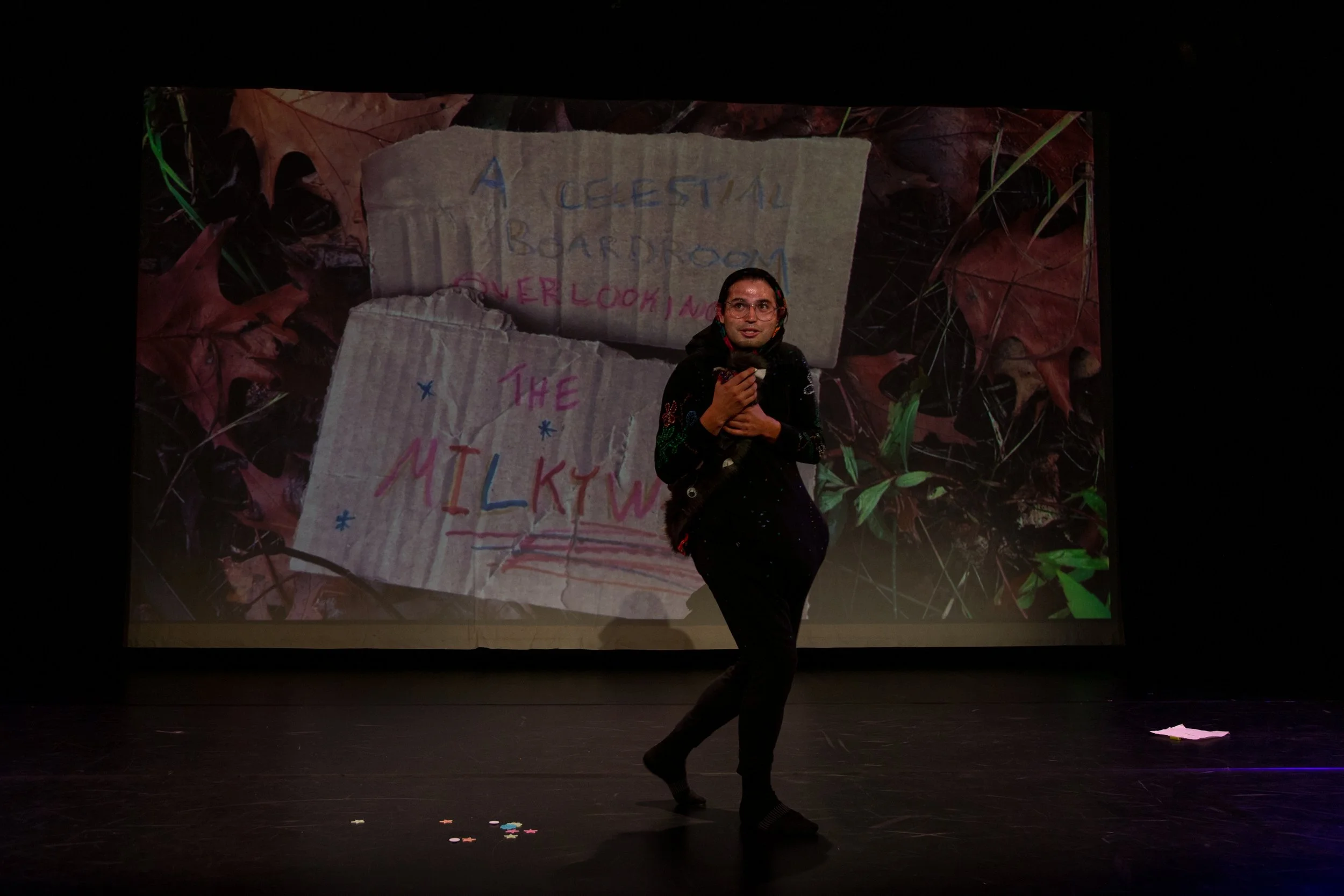

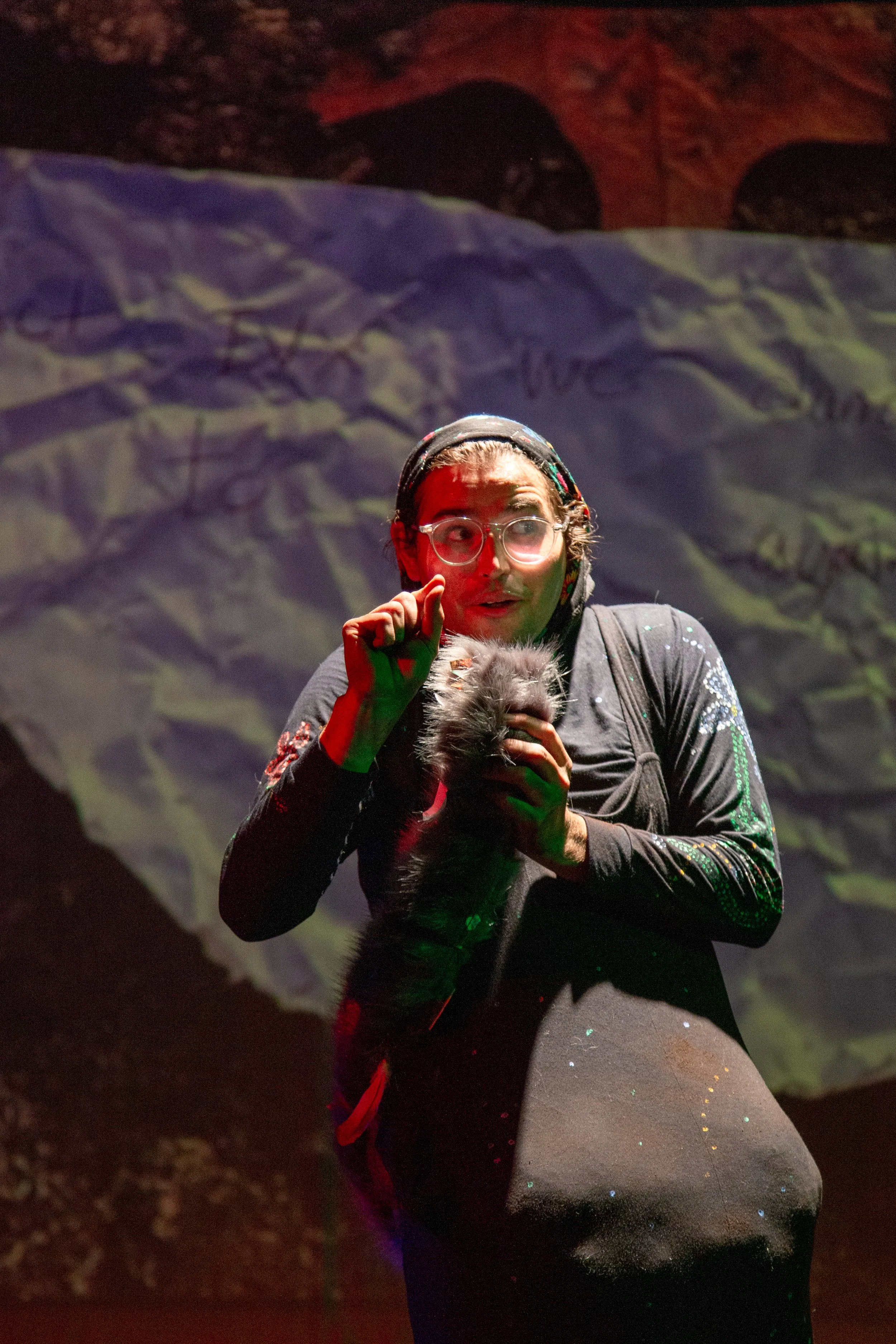
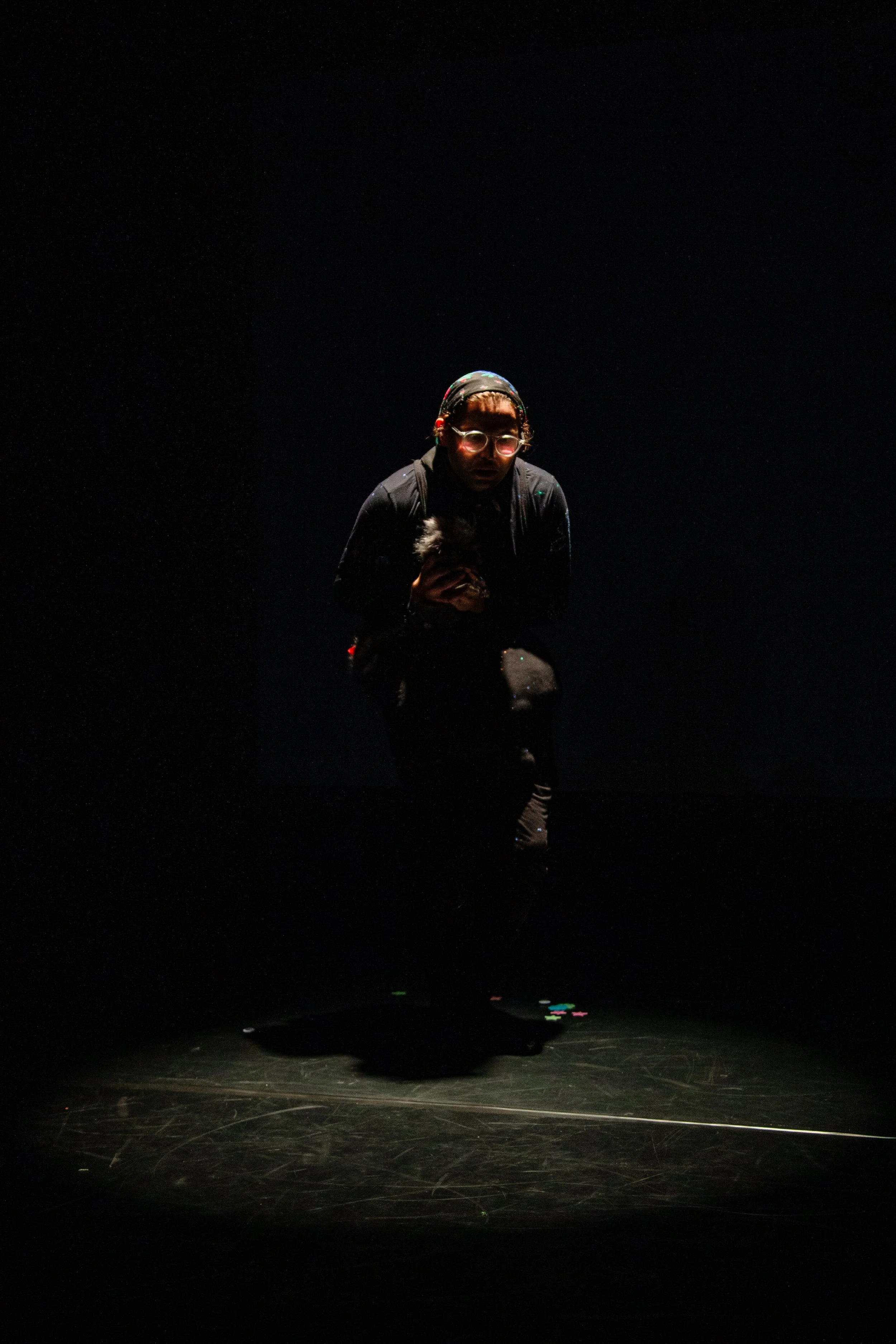
Performances at Kiyanaan Indigenous Theatre Festival Winnipeg, MB, 2025 and Indigenous Presenters Gathering Kingston, ON, 2024. And workshop performance at Native Earth Performing Arts Weesageechak Begins to Dance Festival, 2023.
Created and Performed by Philip Geller | Workshop direction by deisrée leverenz | Dramaturgy by Jill Carter | Mentorship by Spy Dénommé-Welch | Photos by Kate Dalton
Residency at the Banff Centre for the Arts Indigenous Dramaturgies Exchange 2023
Support from Native Earth Performing Arts, Ontario Arts Council Recommender Grants for Theatre Creators from Roseneath Theatre and Young People’s Theatre.
a practise: Misinterpretation (a performance)
Upcoming durational performance at OFFTA as a part of LA SERRE residency, June 2026
A tirade of sonic innuendo to pop culture, Bouffon about the escapism of being White passing, and ultimately grief through burnout, a practise: Misinterpretation (a performance) unveils the constant fight to be true to yourself even when being White might be the easiest option.
Performed at Mile Zero Dance Edmonton, AB and Fluid Festival Calgary, AB, 2024.
Created and performed by Tia Ashley Kushniruk 亚 女弟 and Philip Geller
Rehearsal Director: Charlie Peters | Sound Design: Philip Geller and Will Scott | Lighting Design and Stage Manager: Trent Crosby | Photographer: Susannah Haight
Special Thanks: Centre for Indigenous Theatre, Sweet Action Theatre, Nathaniel “Natty” Justanio, Clarke Blair, Joe Rogan, Jonathan Burrows, and SGSDance
The Trickster Institute
beadwork by Pam Logan
In Residency at The Theatre Centre
A cross-disciplinary performance assemblage, focused on the dissemination, archiving, and celebration of all thing’s trickster! Rooted in nation and community specific creation methodology that enthusiastically invites cross-cultural collaboration. Playfully convened and pleasurably governed by Michif-Jewish theatre/performance artist Philip Jonah Logan Geller.
The Trickster Institute is very serious about play, and playfully serious, and seriously playful. We believe that trickster knowledges, stories, methods, practices, and worldview are a dream beyond the place we stand, at the Edge of the End of the World.
Fence Posts Divided
In Development through the BUZZ program at Theatre Passe Muraille
A new piece of performance-installation that looks at two displaced communities coming together in rural Manitoba – the Métis and the Jews. Inspired by a journey to reclaim Indigenous identity through an understanding of self, community, and sovereignty. The piece examines our fluid personal search for identity and place in a world adamant about binaries
The seed for the theatre piece comes from research that my mother and I have been doing about my grandfather ni mooshum, John Logan. In our research we uncovered that in the 1920’s he lived in Narcisse, Manitoba that happened to be a few kilometers away from Bender Hamlet, which was one of the first Shtetls (a small Jewish town) outside of Eastern Europe. I am Jewish on my Father’s side so this incredible merging of history and present became extremely worth exploring and telling.
Bender Hamlet, a new Jewish community displaced by racism and colonial law in Russia encounters a Métis community, reeling from displacement through scrip and a settler-colonial government, during the early twentieth century. The piece looks at this intersection of identities and communities.
We are looking at the surprising similarities of Métis and Yiddish identity and culture including: language; the power of the matriarch; survival of genocide; Louis Riel’s fascination in the Hebrews; similarities in oral histories; trickster figures; and circular storytelling. While investigating (re)conciliation through the setter-colonial (Jewish) Indigenous (Métis) relationship.
This is a piece of theatre that weaves past, into present, and looks towards the future. Inspired by a journey to reclaim Indigenous identity through an understanding of self, community, and sovereignty. The piece examines one’s fluid personal search for identity and place in a world adamant about binaries.
in development with support from Winnipeg Jewish Theatre. Ontario Arts Council Recommender Grants from Native Earth Performing Arts, Jumblies Theatre, and Volcano Theatre. Ontario Arts Council Indigenous Arts Projects grant

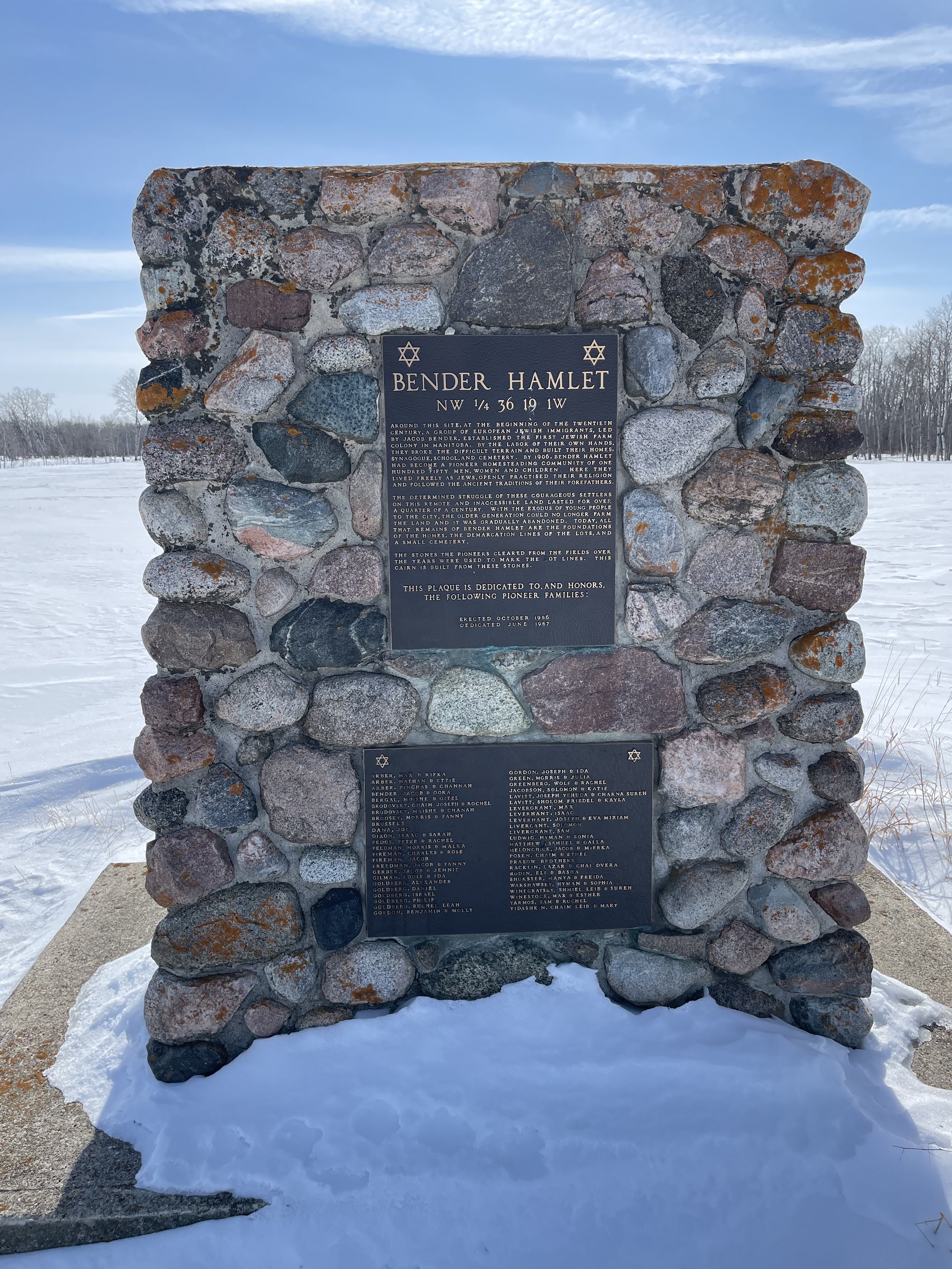
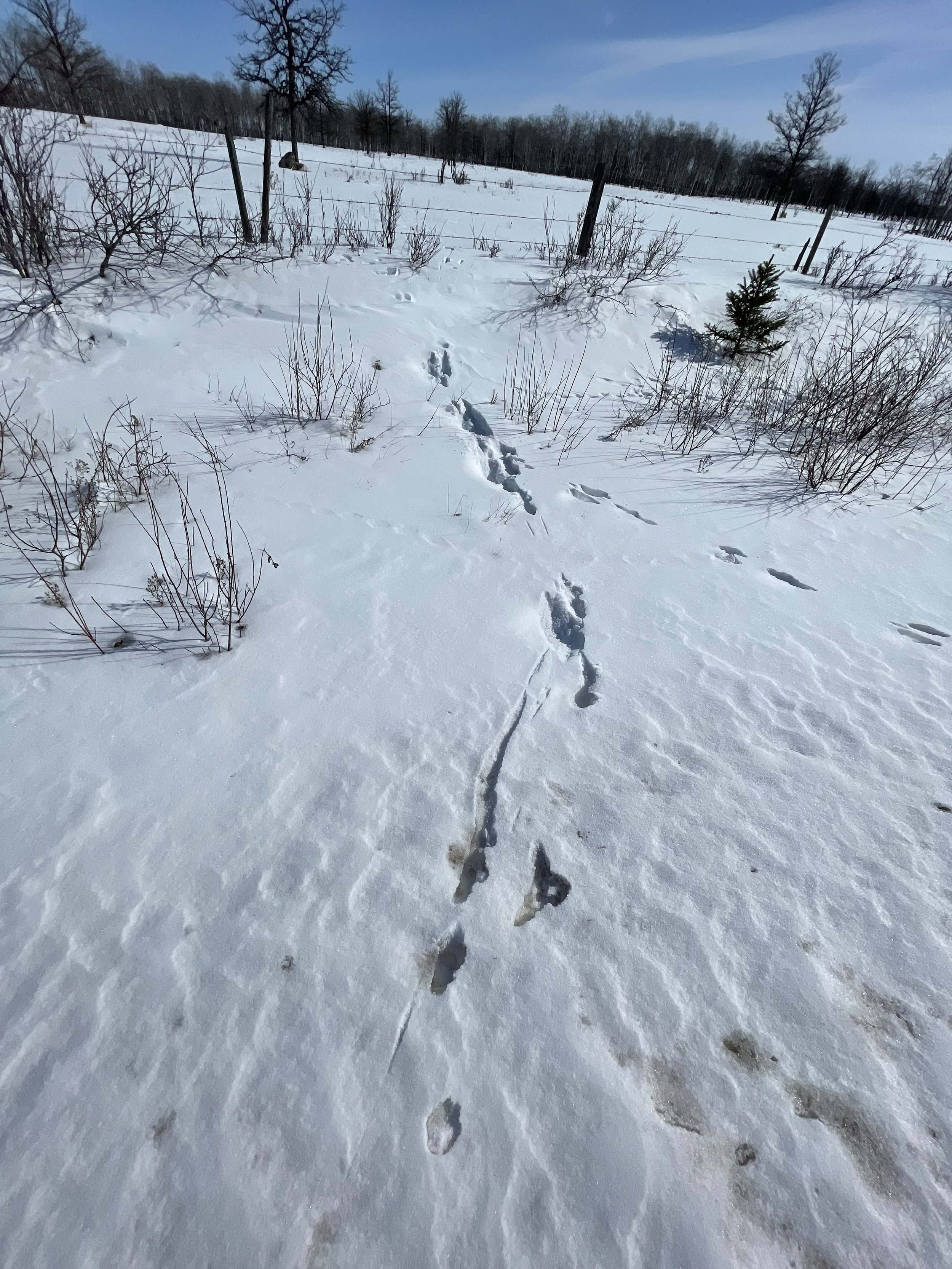

images from research trip to Narcisse, Bender Hamlet, Stonewall and Rooster Town in Treaty 1

